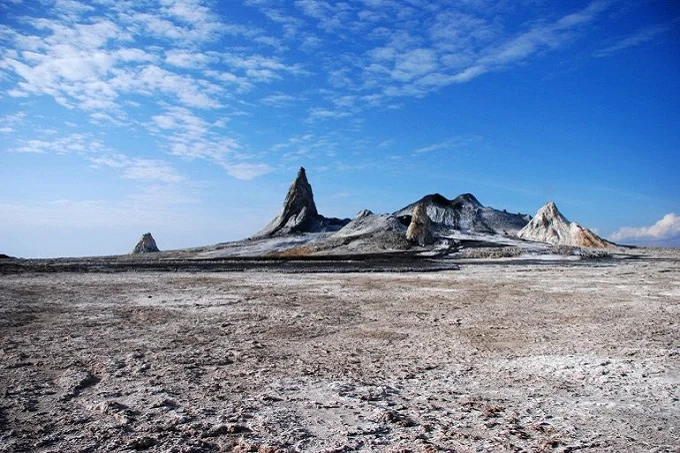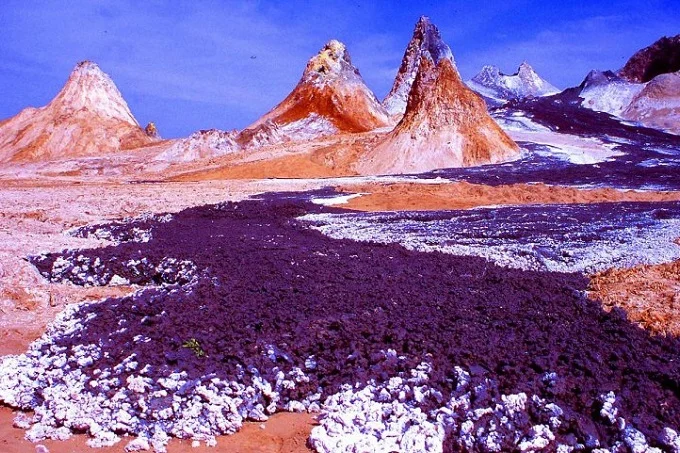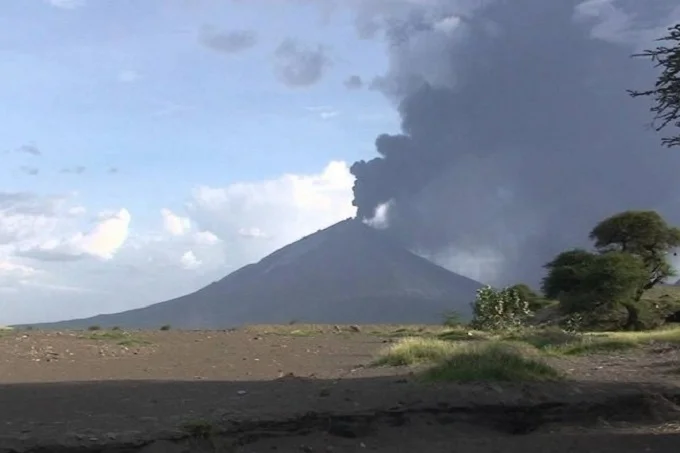Ol Doinyo Lengai facts: Unique Tanzania’s volcano

Ol Doinyo Lengai in Tanzania is the only volcano in the world that erupts with carbonatite lava. This isn’t simply another piece of information for dull scientists to memorize: this volcano is a really unique location on the planet.
Ol Doinyo Lengai eruption history
The volcano is the youngest in this region of the East African Rift, having originated around 370,000 years ago. Locals, understandably, worship this massive volcano, which towers high above the parched plains south of Lake Natron. Mount Meru and the crater of Ngorongoro are two of the most beautiful volcanoes in the East African Rift.
This volcano, however, was noteworthy to the Maasai people since it was a holy site known as the “Mountain of God” (Ol Doinyo Lengai).

This region of Africa was one of the last to be visited by Europeans. In the late 1800s, German explorers were the first Europeans to reach Ol Doinyo Lengai. This volcano is quite active, with eruptions occurring every few years.
In 1960, one of these eruptions drew the attention of Canadian geologist John Barry Dawson, who was exploring this area of Tanzania at the time. In October 1960, he and Ray Pickering went into the volcano’s crater (the first documented descent into the crater) and quickly noted that this volcano was peculiar. A study of the fall was published shortly after it took place in 1962, and the first and only active carbonatite volcano on the planet was identified.
Since then, geologists researching this unique natural marvel have used Ol Doinyo Lengai as a “playground.” Dawson worked on the project until his death in 2013. The volcano is becoming a famous tourist destination.
The most determined tourists attempt to scale the mountain in the scorching heat of the tropical sun in order to get as near to active volcanic activity as possible. This is risky since the weird volcano is unpredictable, and dangers might appear out of nowhere, even in supposedly peaceful areas.
Lavas, which are made up of silicate minerals, are ejected by almost all volcanoes on the planet. Only a few volcanoes have erupted carbonatite lavas, which contain more than 50% carbonate minerals. Although there are over 20 known past carbonatite volcanoes, Ol Doinyo Lengai is the only one that is now active.

The “Mountain of God” spews not only carbonatite lava but also natrocarbonatite lava, which is a highly unusual variety. However, what type of volcano is Ol Doinyo Lengai? Its stratovolcano. It’s made up of carbonate minerals like nyerereite (Na2
This material requires a far lower temperature to melt – this lava is already flowing at 500-600°C and does not even shine during the day – it is simply a stream of black sludge. The lava glows orange in the blackness of night. The temperature of normal lavas is about 1100 degrees Celsius.
Carbonatite lava is also quite liquid compared to regular silicate lavas; in fact, it is the world’s most liquid lava, flowing nearly as quickly as a human can run. This lava’s flow resembles black oil or dirty brown foam.
As the lava cools, it becomes black and crystallizes. But it didn’t stay long: the carbonatite lavas swiftly weathered. The stone becomes white after a few hours due to moisture. The lava becomes white after a few days if the weather is dry. When it rains, the lava instantly becomes white. Without a doubt, this is one of Tanzania’s most stunning locations.
It’s created by a chemical reaction that’s comparable to when lime is burned. As a result, nyerereite and gregorite are very uncommon minerals that must be preserved in an argon-free environment, even in geological collections—the Ol Doinyo Lengai white lava changes to a dark powder during this period. The lava becomes soft after a few months, and the foot sinks into it while walking. As a result, the Ol Doinyo Lengai terrain is unlike any other in the world.

Tanzania’s sole active volcano is Ol Doinyo Lengai. It’s quite active, spewing lava and ash every few years. Volcanic eruptions may become explosive as the silicate content of the lava rises; one such eruption occurred in 2007-2008.
There had been several earthquakes before these eruptions, and even the lions had fled the region. People and their cattle were evacuated to a safe distance from the volcano. During eruptions, the crater often generates hornets, which are miniature hills or towers that spew carbonatite lava. The lava forms lava lakes from time to time.

Since 1983, lava has steadily filled the crater, which is currently filled with carbonatite, jeopardizing the craters’ stability. The soil shifted as the carbonatite lava moved over the neighboring plains. Succulents abound in these meadows, which also serve as grazing areas for a large number of wildebeests.




